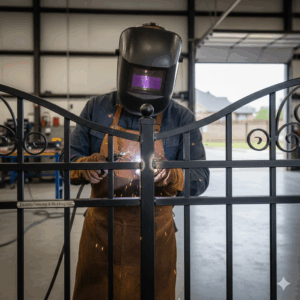Renovating a kitchen is among the biggest tasks that involve changing a home’s most vital space. Besides improving the look of a kitchen, a good kitchen renovation should be able to result in an increase in its functionality and efficiency. However, it can turn out to be a challenging task if common mistakes are not avoided during the process.
Such laxity opens many a homeowner’s eyes to overwhelming surprise issues and additional costs during the renovation. Addressing these common pitfalls is the most important guarantee of success for a project.
From planning and budgeting down to the materials used and the layout optimization, every stage is critical to providing an aesthetic and practical kitchen renovation package. Being aware of these common mistakes, and ways to avoid them, will not only save hours but also avoid unnecessary stress and ensure results as envisioned.
This guide identifies critical mistakes to be on guard against and gives practical advice on how to help navigate the renovation process smoothly.
Mistake 1: Skipping the Planning Phase
Planning is undoubtedly the foundation of any successful kitchen renovation. However, without a detailed plan, you might face unexpected problems and added expenses. Consequently, many people underestimate how crucial this step is. Instead, they dive into the renovation, choosing materials and colours without considering the full picture.
Why Planning Matters
When you plan, you consider all aspects of the renovation. This includes budgeting, design, and timelines. A well-thought-out plan helps you identify potential issues before they become major problems. For instance, if you map out the space, you can ensure that appliances and cabinets fit perfectly.
Steps for Effective Planning
- Define Your Goals: Decide what you want from your kitchen. Are you looking for more space or a modern look? Clearly define your goals to guide your decisions.
- Set a Budget: Establish a budget that includes all possible expenses. This helps you avoid overspending and ensures that you can afford your desired changes.
- Create a Design: Sketch out your kitchen layout or use design software. This visual representation helps you see how different elements will work together.
By following these steps, you can avoid the chaos that comes from rushing into a renovation.
Mistake 2: Ignoring the Budget
A common mistake is not setting or sticking to a budget. Kitchen renovations in Singapore can quickly become expensive. When you don’t have a clear budget, you might end up spending more than you planned.
The Importance of a Budget
Setting a budget helps you manage your finances and avoid overspending. It also guides your choices, ensuring that you select materials and appliances that fit within your limits.
How to Create a Realistic Budget
- Estimate Costs: Research the costs of materials, labour, and permits. Include a buffer for unexpected expenses.
- Prioritize Spending: Decide which elements are most important. Allocate more funds to essential features and less to less critical ones.
- Track Expenses: Keep track of all expenses throughout the renovation. This helps you stay within budget and adjust as needed.
By budgeting properly, you can keep your renovation on track and prevent financial strain.
Mistake 3: Choosing Style Over Function
While a beautiful kitchen is important, functionality should not be overlooked. Choosing style over function can lead to a space that looks great but is impractical for daily use.
Balancing Style and Function
The kitchen is a space where both aesthetics and practicality matter. A stylish kitchen that lacks functionality can make cooking and cleaning a hassle.
How to Ensure Functionality
- Assess Your Needs: Consider how you use your kitchen. Do you need more counter space or better storage?
- Choose Practical Designs: Select designs and materials that meet your needs. For example, opt for easy-to-clean surfaces.
- Test Layouts: Before finalizing your design, test different layouts. Ensure that your kitchen is easy to navigate and work in.
A well-designed kitchen should be both beautiful and practical. By balancing style and function, you create a space that you will enjoy using every day.
Mistake 4: Overlooking Storage Needs
Insufficient storage is a common issue in many kitchens. Without enough storage, your kitchen can become cluttered and inefficient.
The Importance of Adequate Storage
Good storage solutions help you keep your kitchen organized and accessible. They also make cooking and cleaning more efficient.
Tips for Maximizing Storage
- Use Vertical Space: Install cabinets up to the ceiling or use wall-mounted shelves. This helps you make the most of the available space.
- Incorporate Built-Ins: Consider built-in solutions like pull-out pantry shelves or drawer dividers. These can improve the organization.
- Add Multifunctional Furniture: Choose furniture that offers extra storage, like an island with cabinets or a bench with hidden compartments.
By planning for adequate storage, you can avoid clutter and create a more functional kitchen.
Mistake 5: Not Considering Workflow
The workflow in your kitchen affects how efficiently you can cook and move around. Poor layout choices can disrupt this flow and make the kitchen less user-friendly.
Understanding Kitchen Workflow
The kitchen workflow typically follows the “work triangle” concept, which includes the sink, stove, and refrigerator. Efficient placement of these key areas helps streamline cooking and cleaning.
How to Optimize Workflow
- Plan the Work Triangle: Ensure that the sink, stove, and fridge are placed in a functional layout. This minimizes the distance you need to move between these areas.
- Create Work Zones: Designate areas for different tasks, such as food preparation, cooking, and cleaning. This helps keep the kitchen organized.
- Ensure Easy Movement: Allow enough space for movement between work zones. Avoid placing obstacles or overly large furniture in high-traffic areas.
A well-thought-out workflow enhances the efficiency and comfort of your kitchen. By considering these factors, you can create a space that supports your cooking needs and daily routines.
Mistake 6: Skimping on Quality Materials
While doing your kitchen renovation Singapore, choosing high-quality materials is essential. Many people opt for cheaper options to save money. However, this can lead to issues down the road. Low-quality materials often wear out quickly and may require frequent repairs or replacements.
Why Quality Materials Matter
High-quality materials are more durable and perform better over time. For example, solid wood cabinets last longer than particleboard ones. Similarly, high-grade countertops resist stains and scratches better than cheaper alternatives.
How to Choose Quality Materials
- Research Options: Look into different materials and their durability. Compare the pros and cons to make an informed decision.
- Consider the long-term cost: In other words, the better material will cost more in the present but save on repair expenses down the line.
- Get Samples: Get samples first before the final verdict. This way, you will have a chance to see and feel the material.
Quality material could be the reason to enhance the looks of your kitchen with its classy outlook and functionality that lasts through the years.
Conclusion
A successful kitchen renovation involves careful planning and attention to detail. Avoiding common mistakes, such as skimping on quality materials, tackling DIY projects beyond your skills, neglecting lighting and ventilation, and making mid-project changes, can save you time, money, and stress.








